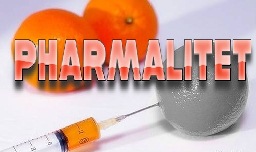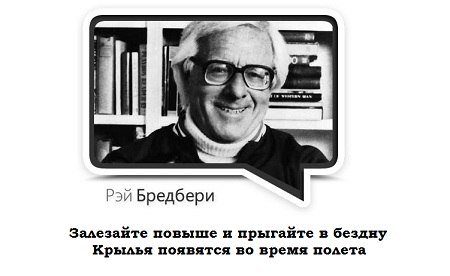Sunday, September 30, 2012
Saturday, September 29, 2012
(Acoustic) levitation. Magic?
Friday, September 28, 2012
India: a communist revolt?
From here:
An Indian panel of ministers has recommended price regulation for 348 "essential
drugs", up from 74 earlier, a federal minister said, a move that is likely to
hit prices of costly brands sold by domestic as well as multi-national
drugmakers.
The panel has finalised the proposal and it will be forwarded to the cabinet
within a week, telecommunications minister Kapil Sibal told reporters on
Thursday.
What about profits for Big Pharma? What if other countries will repeat this approach? No, I think Big Pharma will make something in this situation!
Labels:
Big Pharma,
bubble,
chaos,
deconstruction,
future foresight,
macro economy,
nice idea,
numbers,
paradigm,
politics,
real science
I see the trend. Do you?
A picture from here:

Big Pharma - big penalties. No balls - no babies!

And three drugmakers – Johnson & Johnson, GlaxoSmithKline and Abbott Laboratories – were responsible for two-thirds of the financial penalties paid to the federal and state governments during the most recent study period.
Labels:
Big Pharma,
bubble,
Death Valley,
deconstruction,
depression,
failure,
future foresight,
macro economy,
numbers,
paradigm,
politics,
real science,
shit of the day
Thursday, September 27, 2012
ABC of World Elite. Who rules the world. A.I.Fursov
Labels:
bubble,
cognitive,
deconstruction,
future foresight,
macro economy,
nice idea,
paradigm,
Partisan of Death Valley,
politics,
real science,
video
Music of the week. Tuva. Magic
Another magic cure against cancer. Post No 17.
Actually it
is not a cure but “magic” diagnostics
against breast and lung cancer:
Researchers at Kansas State University have developed
a simple blood test that can accurately detect the beginning stages of cancer.
In less than an hour, the test can detect breast
cancer and non-small cell lung cancer -- the most common type of lung cancer --
before symptoms like coughing and weight loss start. The researchers anticipate
testing for the early stages of pancreatic cancer shortly.
"The problem, though, is that nobody knows
they're in stage 1," Bossmann said. "There is often not a red flag to
warn that something is wrong. Meanwhile, the person is losing critical
time."
The test developed by Kansas State University's
Bossmann and Troyer works by detecting increased enzyme activity in the body.
Iron nanoparticles coated with amino acids and a dye are introduced to small
amounts of blood or urine from a patient. The amino acids and dye interact with
enzymes in the patient's urine or blood sample. Each type of cancer produces a
specific enzyme pattern, or signature, that can be identified by doctors.
In addition to early detection, researchers say the
test can be tweaked to monitor cancer. For example, patients being treated with
drugs can be observed for drug effectiveness. Similarly, doctors can use the
dye in the test to determine if the entirety of a tumor has been successfully
removed from a patient after surgery.
Researchers evaluated the test's accuracy on 32
separate participants in various stages of breast or lung cancer. Data was
collected from 20 people with breast cancer -- ranging in age from 36 to 81
years old -- and 12 people with lung cancer -- ranging in age from 27 to 63
years old.
Twelve people without cancer were also tested as a
control group. This group ranged in age from 26 to 62 years old.
A blood sample from each participant was tested three
times. Analysis of the data showed a 95 percent success rate in detecting
cancer in participants, including those with breast cancer in stages 0 and 1
and those with lung cancer in stages 1 and 2.
Despite 95%
success rate (which looks not very high) I am very impressed. I think this diagnostics
will be developed further and very soon will revolutionize the oncology. A new Black
Swan probably?
Labels:
another magic cure,
bubble,
deconstruction,
future foresight,
magic,
nice idea,
real science
Masterpiece of the day. Yurij, we are...
Labels:
another magic cure,
cognitive,
deconstruction,
depression,
failure,
future foresight,
politics,
real science,
semantic,
shit of the day
Wednesday, September 26, 2012
“The Scientist Is No Longer In The Laboratory” – sick?
Another
invitation to a webinar: QbD
& PAT - The Scientist Is No Longer In The Laboratory, But Integrated In The
Overall Quality Process
I do not
agree with items 1, 2 and 4 – the statements are questionable. But the most
striking is the title: “The Scientist Is No Longer In The Laboratory”! I like
this approach! Who will develop novel medicinal products? RA, QA or QC staff? Eroom law works well!
Labels:
chaos,
deconstruction,
future foresight,
nice idea,
paradigm,
shit of the day
Eroding revenues, cost pressures and pipeline failures… due to targeted approach?
I have got
an invitation to a webinar: EXTERNAL
INNOVATION: REPLENISHING THE R&D PIPELINE
External pressures have led to sweeping changes in the
way companies find new drugs. Eroding revenues, cost pressures and pipeline
failures have made large pharmaceutical companies more risk-averse and dependent
upon academia and small companies for sourcing innovation. Companies large and
small have also experimented with new research models: pre-competitive
collaboration, innovation networks, micropharmas, public-private partnerships,
on-line exchanges, etc.
Key words
here: Eroding revenues, cost pressures and pipeline failures. Well, what’s about
targeted approach? Is it really well understood that it is not sexy
anymore?
Labels:
another magic cure,
Death Valley,
deconstruction,
depression,
failure,
future foresight,
macro economy,
nice idea,
numbers,
paradigm,
Partisan of Death Valley,
real science,
shit of the day
White House seeks to double new drugs. Really?
Amazing!
Why not? And how it will be done? We read here:
Well, in
reality – nothing special, the same populist mantra: increasing funding for basic, translational
and regulatory science and creating a broad-based partnership bringing together
government, industry, academia. Politicians should find out something more
impressive and new… Otherwise - not even a chance to maintain the amount of new drugs on the same level!
Labels:
another magic cure,
Big Pharma,
bubble,
deconstruction,
depression,
failure,
future foresight,
investment,
macro economy,
nice idea,
numbers,
paradigm,
Partisan of Death Valley,
politics,
real science
Another magic cure against cancer. Post No 16. Metformin?
Yes, Metformin!
And the title of one of the articles: “Five-Cent
Diabetes Pill From 1958 May Be New Cancer Drug”
The next new treatment for breast, colon and prostate
cancers, among others, may be a diabetes drug first approved in 1958.
Metformin, the most commonly used medicine to lower
blood- sugar, is the subject of about 50 cancer studies globally, according to
U.S. government clinical trial information compiled by Bloomberg. The research
began after scientists found metformin prevented tumors in mice and that diabetics
were less likely to develop a malignancy if they were taking the 5 cents- a-day
pill than other diabetes medications.
The medicine is dispensed about 120 million times
annually, according to a 2010 report in the journal Molecular Cancer
Therapeutics. If the latest trials on breast and other tumors are successful,
the drug could become a cheap weapon in the fight against a myriad of diseases
including pancreatic and ovarian cancers. All told, cancer kills one in eight
people and is the second-leading cause of death in most developed countries.
“The hope is that if it does show safety and efficacy,
it would be available in a cost-effective way,” said Chandini Portteus, vice
president of research, evaluation and scientific programs at Susan G. Komen for
the Cure, a Dallas-based breast cancer advocacy group. “It would be wonderful
for patients if we had something that we knew worked and was safe and low-
cost.”
Well, I
would wish a success to this initiative with Metformin, however the idea to
find out very cheap and efficient medicine against cancer seems quite naïve…
Like magic bullet... for nothing?
20 Top-selling Vaccines. Just sick numbers
From here
(the details inside the link).
Thanks in part to the adult influenza market and
vaccines such as Gardasil and Prevnar, the global vaccines market has enjoyed a
decidedly solid boost in revenue. Ten years ago, the vaccine market sat at $5.7
billion dollars, according to Kalorama Information. Now, that market has soared
to $27 billion
Labels:
bubble,
deconstruction,
numbers,
real science,
shit of the day
Tuesday, September 25, 2012
Is it a really good news???
Korean eunuchs — men who had their testicles removed — outlived their contemporaries by as many as 14 to 19 years, suggesting that male sex hormones somehow act to shorten the male human lifespan, according to a new historical study of records spanning from the 14th century through the early 19th century.
Well, we know that health is a critical resource for the majority. But not for 100% of the population. Probably to 99.5%. I definitively belong to those 0.5% of population... Definitively.
Labels:
depression,
failure,
future foresight,
paradigm,
real science,
shit of the day
Monday, September 24, 2012
ABC of liberalism. Dugin
Labels:
cognitive,
deconstruction,
depression,
failure,
future foresight,
paradigm,
politics,
real science,
shit of the day,
video
Sunday, September 23, 2012
TB Drug Development. Positive news?
From here:
Sanofi has extended its links with the Global Alliance for TB Drug Development to discover new treatments for the deadly infectious disease that resulted in almost 1.5 million deaths during 2010.
The key words here "in-depth research of lead compounds based upon identified chemical derivatives of natural products…and the chemical optimisation of other series of compounds that have been identified as hits through high-throughput screening". Well, the same HTS approach and the same "targeted" mantra. I think that Sanofi and Alliance should know that this approach is inefficient. And probably they know but this is a part of plan...
The deal is an expansion to a previous pact signed between Sanofi and TB Alliance in 2008.
Quote of the day. Chineese wisdom
«То, что известно всякому, уже случилось. Того, что известно мудрому, пока ещё не существует»
Чжан Юй, биограф времён династии Сун
Чжан Юй, биограф времён династии Сун
Labels:
cognitive,
deconstruction,
future foresight,
magic,
quote of the day,
real science
Saturday, September 22, 2012
Big Pharma, big hospital, big failure?
Very interesting news:
The University of Texas MD Anderson Cancer Center in Houston expects to spend as much as $3 billion on the project over the next 10 years and already has “tens of millions” of dollars in gifts to jump start it now, said its president, Dr. Ronald DePinho.
Are you impressed? Well, I mean $3 billion? Well, I am not. Absolutely not! Look, Big Pharma invests tens of billions with only very modest success (if any!) for latest decades. Sure, Big Pharma simulates the R&D, no doubt about it. But what is about this new initiative? Why “this time” and “these billions” should differ from Big Pharma's attempts? Big doesn't mean efficient and successful...
Labels:
Big Pharma,
bubble,
deconstruction,
depression,
future foresight,
politics,
semantic
Targeted failure. Post No 18
From here:
And amuvatinib is of course targeted compound: Amuvatinib is a small molecule multi-targeted tyrosine kinase inhibitor designed to inhibit mutant c-KIT and PDGFalpha, and disrupt DNA repair through what is likely to be a Rad51-based mechanism.
What targeted medicine will fail next?
Labels:
bubble,
deconstruction,
depression,
failure,
real science,
shit of the day,
targeted failure
Masterpiece of the day. Fake gold? No - golden tungsten!
Labels:
chaos,
deconstruction,
depression,
failure,
macro economy,
masterpiece of the day,
nice idea,
paradigm,
politics,
real science,
shit of the day
Friday, September 21, 2012
Pharma’s next danger: deindustrialization
You
probably know that deindustrialization in the west cannot allow US to launch
new moon flight and basically NASA has to
stop the majority of projects. Do you know what? Terrible news! The next
will be Pharma. Already now we can see a
dangerous sign for inability to manufacture medicinal products!
Danish drugmaker Lundbeck has told doctors in a letter
that beginning in December, it will stop supplying its leukemia drug Elspar
because it has been unable to get a steady supply of the API.
And do not
blame the authorities – there is always a possibility to solve any problem if
there is a desire and industrial and scientific competence. Otherwise? Welcome
to post-industrial deindustrialized world!
Thursday, September 20, 2012
W. Buffett: radiation therapy as right decission
I have seen news:
Warren E. Buffett says he is done with radiation treatments for prostate cancer, and the prominent investor seems eager to return to work.
Mr. Buffett, the chairman and chief executive of Berkshire Hathaway, broke the news on Friday while speaking to a group of executives from newspapers his company owns. “It’s a great day for me. Today I had my 44th and last day of radiation,” he said, according to The Omaha World-Herald, which is one of those newspapers.
Mr. Buffett disclosed in April that he had received a diagnosis of prostate cancer. At the time, he said the disease was detected early and was not life-threatening.
Labels:
deconstruction,
evidence based medicine,
nice idea,
real science,
shit of the day,
targeted failure
New portion of depressive music of the week from Linda. NEVER
Labels:
another magic cure,
cognitive,
deconstruction,
depression,
magic,
masterpiece of the day,
music of the week,
nice idea,
semantic,
shit of the day,
video
Big Pharma R&D needs help. Really!?
It was proved that Big
Pharma is not interested in development of innovative products no matter what
it says. Instead of doing real development it usually simulates it. The
simulation “convinces” public that Big Pharma invests a lot but in reality the resources
are just burned. The next
simulation initiative is astonishing (see also here):
By participating in TransCelerate, each of these companies will combine
financial and other resources, such as personnel, to work out industry wide
challenges in a team work atmosphere.
Back in June, Ernst & Young released its “Beyond Borders: Global
Biotechnology Report 2012,” which addressed some of the problems in R&D and
suggested that companies, academia, and nonprofit groups should strive to share
noncompetitive data in networks called HOLnets to improve drug development.
I like this simulation
initiative! Big Pharma which invests billions and billions every year needs
more resources (!), needs more collaboration (!) to develop something
worthwhile! This is completely sick!
Wednesday, September 19, 2012
Another magic cure. This time against cellulite. Post No 15.
I would highly recommend this kind of treatment. If it is not useful, probably - it is not toxic anyway :)
Quote of the day. Friends...

Labels:
cognitive,
deconstruction,
nice idea,
quote of the day,
real science,
semantic
Tuesday, September 18, 2012
Eurasian project. Let's be ambitious!
Labels:
deconstruction,
macro economy,
nice idea,
quantum,
real science,
video
Biosimilars: the zest of the issue
I have obtained an invitation to participate in a webinar "Biosimilars: Nonclinical and Clinical Development Challenges and Considerations"
Biosimilars are biologicals and are very attractive approach for Big Pharma in terms of
1. High complexity
2. Low efficiency
3. High price
And organizers of the webinar are aware of the situation:
Do you need any further clarifications? No, just "copy-paste" or "me-too" business!
Labels:
Big Pharma,
bubble,
deconstruction,
depression,
dirty swan,
nice idea,
paradigm,
real science,
shit of the day
Cancer is becoming No 1 killer
From here:
Cancer has overtaken heart disease as the No. 1 killer among Hispanics in the U.S., and the rest of the country may be only a few years behind.
Overall, cancer will probably replace heart disease as the nation's top cause of death in the next 10 years, said Rebecca Siegel of the American Cancer Society, lead author of a study reporting the new findings. Government health statisticians think the crossover point could be reached as early as this year, or at least in the next two or three years.
Well, there is not very much progress with anticancer drugs... I would suggest the situation with oncology as desperate one...
Labels:
chaos,
depression,
failure,
future foresight,
shit of the day
Monday, September 17, 2012
Quantum physics. Absolutely unnatural
The behaviour of the lady is absolutely unnatural. Nice ladies should not discuss quantum theory.
Part 1
Part 2
Sunday, September 16, 2012
Another magic cure. Post No 14. Cannabis?
From here:
GW Pharmaceuticals, best known for Sativex, its cannabis-based treatment for the treatment of spasticity due to multiple sclerosis, says it may have come up with a similar compound that could represent a major advance in epilepsy.
 The UK-based drugmaker noted that one of its partners, the University of Reading, has unveiled promising data from studies on cannabidivarin (CBDV), "a largely ignored natural compound found in cannabis that could lead to better treatments for epilepsy". The work was funded by, and performed, in collaboration with GW and Otsuka Pharmaceuticals; the latter two firms joined forces in July 2007 in a global cannabinoid research collaboration that currently runs to the end of June 2013.
The UK-based drugmaker noted that one of its partners, the University of Reading, has unveiled promising data from studies on cannabidivarin (CBDV), "a largely ignored natural compound found in cannabis that could lead to better treatments for epilepsy". The work was funded by, and performed, in collaboration with GW and Otsuka Pharmaceuticals; the latter two firms joined forces in July 2007 in a global cannabinoid research collaboration that currently runs to the end of June 2013.
Reading University’s Department of Pharmacy and School of Psychology have discovered in preclinical studies that CBDV has the potential to prevent more seizures, with few side effects such as uncontrollable shaking, caused by many existing anti-epileptics. It was also found to work when combined with the latter drugs, and unlike other cannabinoids, CBDV is not psychoactive and therefore does not cause users to feel high, GW notes. The findings are reported in the British Journal of Pharmacology.
Well, another magic treatment! The product is natural... If a modern pharma paradigm cannot help and even has no an worthwhile idea regarding epilepsy treatment – let's try anything – even cannabis! It will not harm that much!
Labels:
another magic cure,
Big Pharma,
Death Valley,
deconstruction,
paradigm,
Partisan of Death Valley,
shit of the day
Saturday, September 15, 2012
Alzheimer's drug development: big disappointment. Numbers
I have already written about the failure with AD drug development. Here we have an article describing the extent of the failure. And the scope of the failed attempts is so huge that I become a little bit sorry for the colleagues who work in this area. They have to be a little bit smarter and more ambitious. They had to learn something from failures otherwise they will make additional 100 or 1000 failed projects. Very sorry. Really... And here are the numbers:
97 new drugs are currently in development for patients with Alzheimer's disease and other dementias, including 83 for Alzheimer's, 12 for cognition disorders and two for dementias, according to a new US industry report.
However, between 1998 and 2011, 101 such treatments failed to reach patients, and only three medicines were approved to treat symptoms of the disease, representing a 34:1 ratio of setbacks, says the report, which is published by the Pharmaceutical Research and Manufacturers of America (PhRMA).
Of the 101 medicines which have become "inactive" and not received regulatory approval since 1998, 83 have been definitely discontinued, while the others have been "suspended," ie, halted for the foreseeable future, or have "no development reported," meaning no evidence of continued research in the past 18-24 months, says PhRMA. The chance of reactivation of "inactive" projects is very small, it adds.
"Setbacks in Alzheimer's research are disappointing to many, including the scientists carrying out the studies, but these unsuccessful attempts are critical stepping-stones to advancing our understanding of this extremely complex disease," commented John J Castellani, chief executive of PhRMA.
"The reality is that so-called failures in the development of new drugs for Alzheimer's are helping redirect research - providing new information that allows science to move forward," he added.
The potential new treatments now in R&D - either in clinical trials or under review by the US Food and Drug Administration (FDA) include: - an intranasal medicine that is able to penetrate the blood-brain barrier for mild cognitive impairment, a precursor to Alzheimer's disease; - a gene therapy for the treatment of Alzheimer's; and - a synthetic vaccine that induces antibody production without creating a systemic immune response.
The industry report also discusses the scope and economic burden of Alzheimer's on the US. 5.4 million people are currently affected by the disease, and it accounts for $200 billion a year in direct medical costs, due in part to the cost of nursing home care. The indirect costs are at least as high, with the number of family, friends and caregivers of Alzheimer's patients reaching 15. 2 million in 2011, providing paid care valued at more than $200 billion, according to the Alzheimer's Association.
Moreover, the number of people in the US with Alzheimer's is projected to grow every year to reach a total of 13.5 million patients by 2050. On this trajectory, the direct cost of the disease in people aged over 65 could balloon to $1 trillion a year by 2050, in today's dollars, with a total of $20 trillion in medical costs in the next 40 years, the Association adds.
However, the PhRMA report also says that a new treatment that delays the onset of disease by five years would reduce the number of people with Alzheimer's by nearly half and reduce their cost of care by $447 billion a year by 2050.
And a treatment that slows the progression of Alzheimer's by five years would reduce the expected number of people in the severe stage of the disease by over 65% and save $197 billion a year by 2050, it adds.
Labels:
Big Pharma,
bubble,
chaos,
Death Valley,
depression,
failure,
future foresight,
numbers,
paradigm,
Partisan of Death Valley,
real science,
shit of the day,
targeted failure
Friday, September 14, 2012
Drug Repositioning? Why?
I have
obtained an invitation to webinar: Drug
Repositioning Through Phenotypic Screening. The subtitle to the event is
just mind-bursting: Engineering Serendipity. It is not a joke! It is a little bit
too ambitious, isn’t it? Well, what is summarized in introduction?
This presentation attempts to demonstrate the value of
a non-biased, phenotypic screening strategy for drug repositioning. Several
case studies are offered and some ideas are put forth for how this approach
might be economically applied to failed clinical candidates.
In simple
words it basically means that modern paradigm (which is “targeted” with HTS and
other BS) is not efficient. I would say more frankly – it is dead. What the
industry has to do? Just go back to the basics, to phenotypic screening! I have
already written a lot about
the situation and the
reasons of this mess.
Let’s go
back to the webinar:
Key Learnings
• Understand
the impact of clinical trial failures and business pressures on productivity.
• Gain
an understanding of the utility of phenotypic screening in drug discovery.
• Develop
an appreciation for phenotypic screening as a repositioning strategy.
• Reconcile
non-hypothesis testing with the scientific method.
Key word
here is “non-hypothesis testing”. Once again – this is not a joke, the authors
are dead serious! Do you know the message with the use of the term “non-hypothesis
testing”? It means that all “targeted” hypotheses failed! J
Labels:
Death Valley,
deconstruction,
evidence based medicine,
failure,
future foresight,
nice idea,
paradigm,
Partisan of Death Valley,
real science,
shit of the day,
targeted failure
Subscribe to:
Posts (Atom)



















